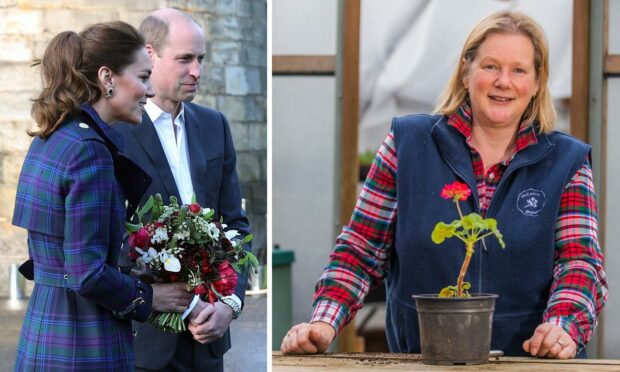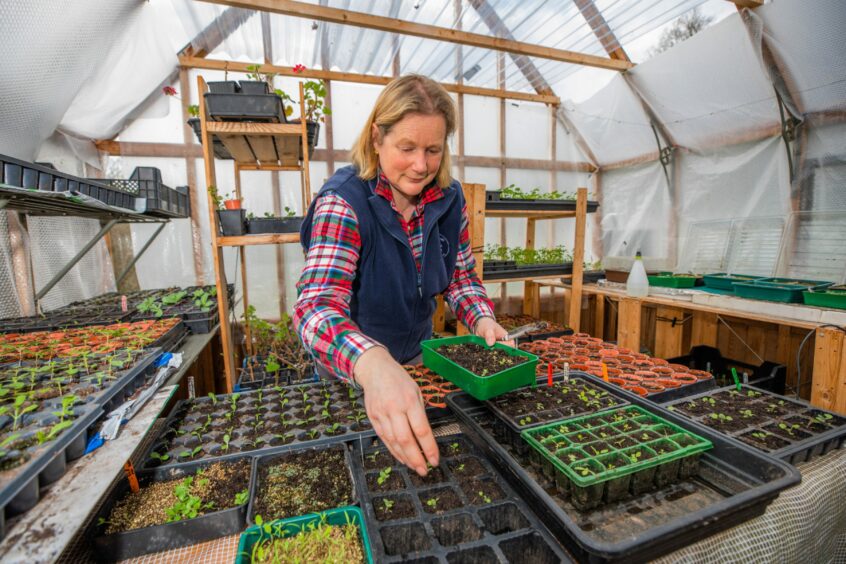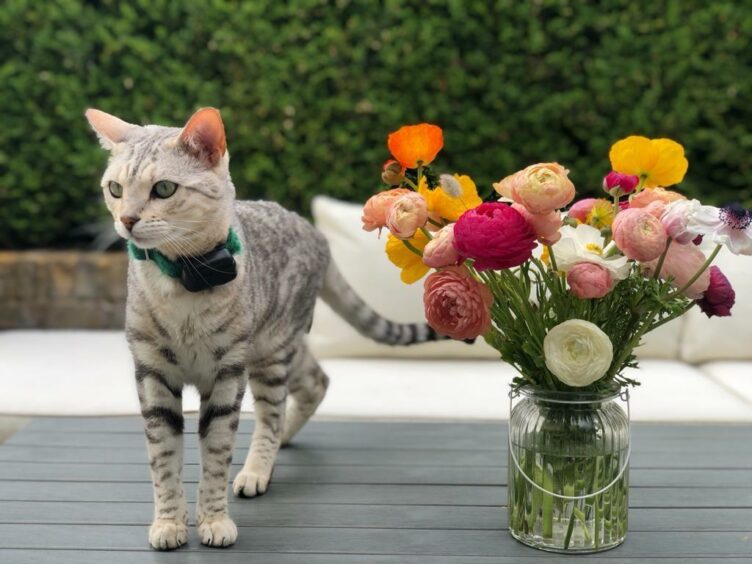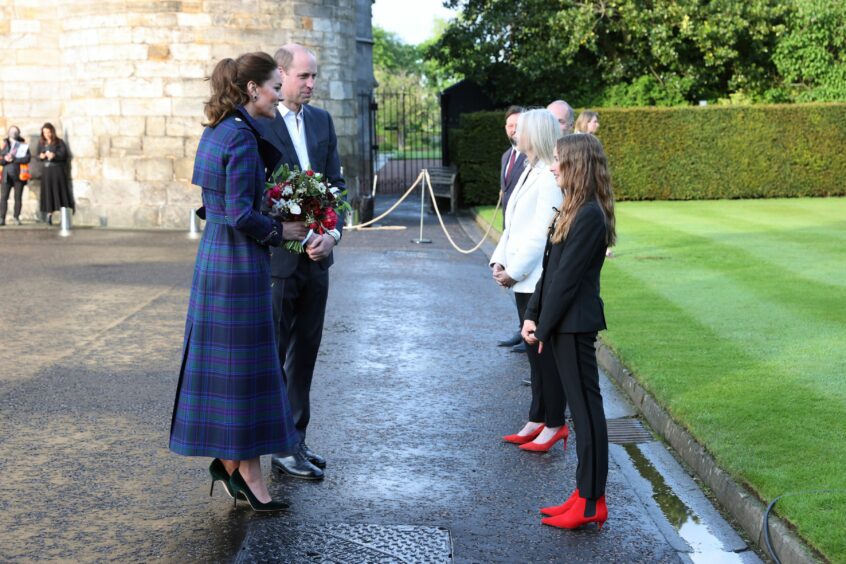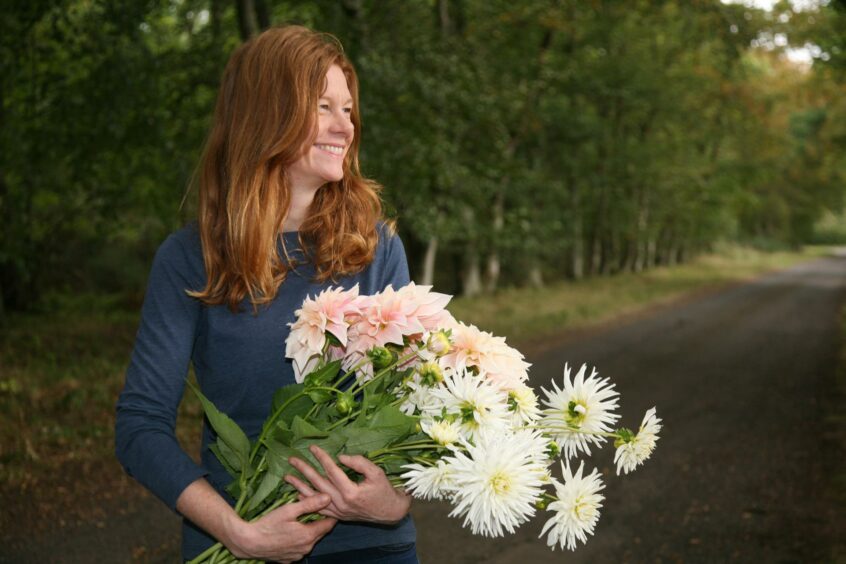Fancy growing flowers in your back garden? We found out how local blooms from Perthshire got the royal seal of approval.
Anne Smith runs McConnell Blooms in Bankfoot.
She started up the business after moving to a house next to a field. Initially she populated the bare ground with fruit trees, then flowers.
Since then her blooms have been used for weddings, funerals and photoshoots.
Last year, they even ended up in a bouquet given to the Duchess of Cambridge.
“It’s a growing industry,” says Anne.
“More florists are starting to look for local flowers.”
Why choose local?
The majority of flowers that end up in our vases are from the Netherlands. Kenya is also a significant supplier.
But rocketing fuel costs are pushing up prices and florists are increasingly looking to local growers.
Anne, 54, says this is creating “more of an even playing field”.
It is also cutting air miles and carbon emissions.
Choosing homegrown flowers can also add a personal touch to a special occasion.
“Most people don’t want to have their wedding stuff looking the same as everyone else’s.
“Using local flowers gives a really different feel.”
Brides are waking up and smelling the roses
If you want your wedding bouquet to look exactly like the one you found on Pinterest, sourcing from Scottish suppliers probably isn’t for you.
Anne says she can’t always replicate exactly what a customer envisages, but she can produce something special.
“You won’t get the same. You’ll get wiggly stems.
“And if you have a wedding in December, it doesn’t necessarily have to look like Christmas.
“You can mix dried flowers with foliage and it looks lovely.”
One big advantage of local flowers is their fragrance.
“You’ll get scent as well, which you mostly won’t get from imported flowers.
“Most severely bred flowers have had the scent taken out. It improves the standing power of them.”
Expect to find blooms such as scented sweet peas, anemones, tulips and ranunculus in your bouquet – all within 36 hours of them being cut.
What about that royal bouquet?
Edinburgh florist Narcissus used flowers grown by Anne in Bankfoot to make a bouquet for the Duchess of Cambridge.
Actress Tipper Seifert-Cleveland, of the film Cruella, gave the posy to Kate Middleton during a screening of the movie for NHS staff at Holyrood Palace.
Anne says it was “quite a tricky flower brief”.
“They asked for black or dark flowers, and red and white flowers to reflect the colours of the film.
“Plus blue flowers for NHS staff who had been asked to attend the showing, at the invitation of the Duke and Duchess of Cambridge, to thank them for all their work during Covid.
“I enjoy a challenge and love putting ‘curated’ buckets together for clients.”
This is where you come in – if your garden is big enough
Anne is part of a growing network of growers called Flowers from the Farm.
Across the UK the network is 1,000 strong.
Of those, just 70 are in Scotland.
And Flowers from the Farm are encouraging more potential growers to pick up the trowel.
“I looked around and thought there aren’t many people doing it in Scotland. Can you do it in Scotland?”
Turns out you can.
Growers are producing flowers across the country, from their gardens, allotments and farms.
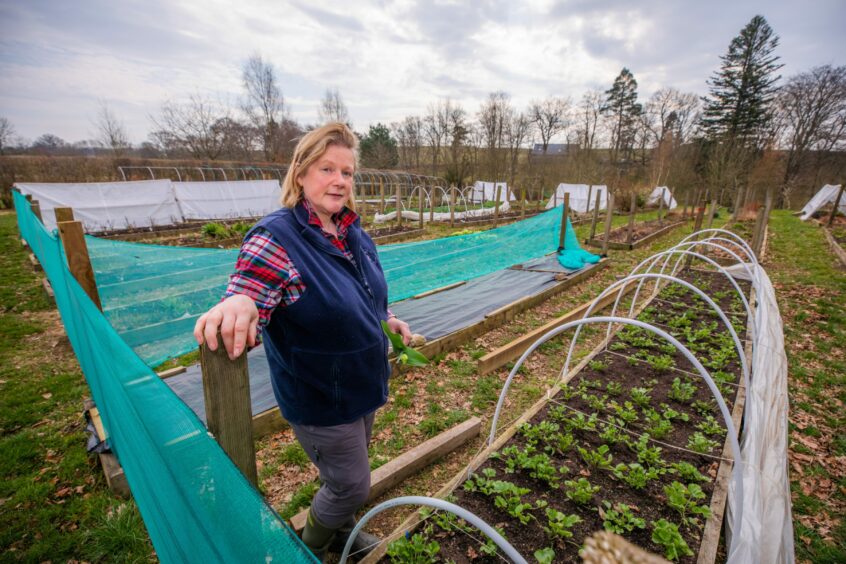 Anne, who previously worked in catering and is now in her sixth growing season, is kept busy almost all year round.
Anne, who previously worked in catering and is now in her sixth growing season, is kept busy almost all year round.
She sells directly to shops and florists, or deals directly with customers through her website.
“It’s very satisfying. To be able to say that I grew that from a tiny seed to a plant.
“I’ve cut it and it’s now gone off maybe to a funeral, rather than a wedding.
“It’s things like that people will remember. Something slightly different, not the same that they see elsewhere.
“It’s a pleasure to be part of someone’s special day.”
Why local flowers are good for the planet
Research at Lancaster University concluded that the carbon footprint of British grown flowers was dramatically smaller than those from the Netherlands or Kenya.
“If you can supply as locally as possible – it’s the same for food – it’s going to be a much lower footprint all round,” says Anne.
She adds: “And it’s very good for local ecosystems. It definitely has an impact on pollinators. And keeping flowers healthy is all about good soil health.”
Debbie Scott is the co-chair of Flowers from the Farm.
She says: “According to DEFRA, British-grown flowers account for only 14% of the cut flowers sold in the UK.
“With the remaining 86% imported from the vast glasshouses of Holland or flown in from as far afield as Kenya, Ethiopia, Ecuador and Colombia.”
Debbie is encouraging “more flower farmers to pick up a trowel and be part of the local, seasonal cut flowers movement”.
“We want artisan-grown flowers to be accessible to everyone throughout in the UK.
“It is hard work. It’s far from ‘playing with flowers’, but incredibly rewarding as flowers bring such joy and comfort to people’s lives.”
